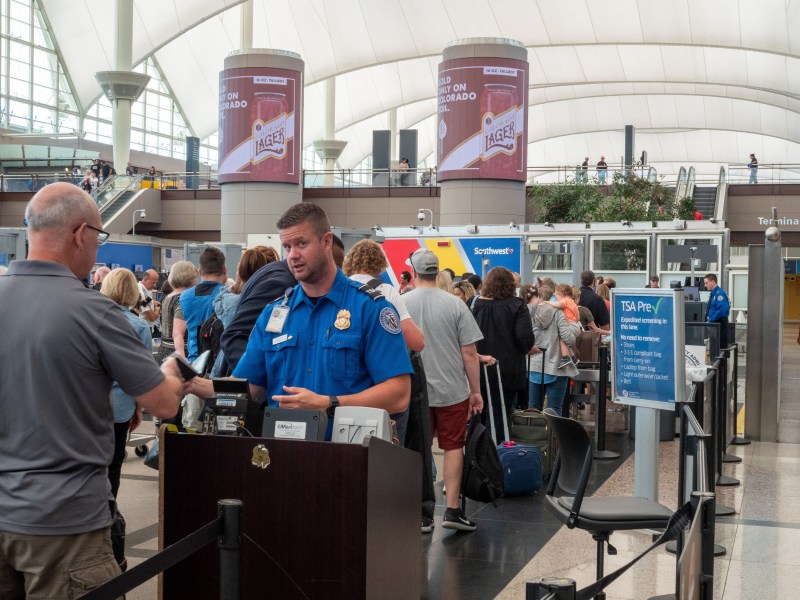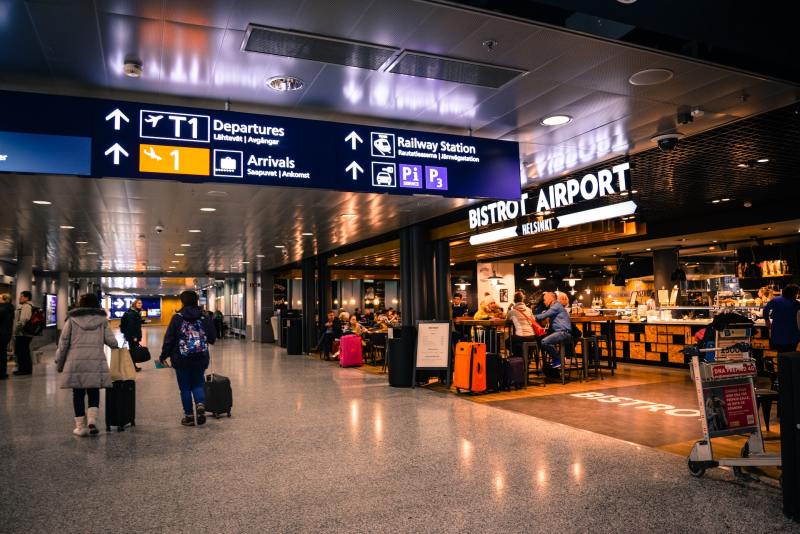Flying during the holidays generally involves a unique interaction with the TSA. The TSA rules become stricter as airports teem with festive travelers and their holiday-themed belongings. However, before you bring your holiday goodies to the airport, it’s important to know what can you take on the plane.
TSA liquid rules
Before diving into the specifics of what you can and cannot bring on a plane, it’s important to be aware of the TSA’s rules for liquids The TSA liquids rule, often called the 3-1-1 rule, applies to passengers bringing liquids in their carry-on luggage.
- 3.4 ounces or less: Each liquid container must be 3.4 ounces (100 milliliters) or smaller.
- 1 quart-sized, clear, resealable bag: Every liquid you bring must fit into a single quart-sized, clear, resealable plastic bag.
- 1 bag per passenger: Each passenger only gets one quart-sized bag.
The TSA liquid limit does not apply to checked baggage, and exceptions are sometimes made for essential liquids such as medications, baby formula, breast milk, or liquids needed for medical conditions.
Common holiday items

So, what can you take on a plane during the holiday season? This is what the TSA says about common holiday items.
Wrapped presents
Wrapped presents are allowed in both carry-on luggage and checked bags. However, TSA officers may need to unwrap them to inspect them, so it is encouraged that travelers keep their presents unwrapped.
Ice skates
Are you thinking about ice skating at your final destination? According to the TSA, you can pack your ice skates! Ice skates are permitted in both carry-on and checked baggage. If you bring your skates in your carry-on bag, you may need to separate them from your other items during the security check.
Pine cones
Pine cones are permitted into the U.S. from every country except for India. However, if you’re traveling abroad this holiday season, you may want to be careful before bringing along pine cones. Both New Zealand and Australia do not allow pine cones through customs due to the risk of transporting pests.
Strings of lights
If you need to bring along a few strands of Christmas lights to decorate the tree, then you can add them as a carry-on item or pack them in your checked bag.
Wreaths and garlands
Wreaths and garlands are often lumped into the “plants” category, which isn’t a problem as long as they fit into the overhead compartment or under your seat. However, if you are bringing plants into or out of the U.S., you may be subject to further questioning. The TSA needs to ensure that the plants are healthy and do not carry pests or other diseases.
Knitting needles
If you’re working on a holiday knitting project, you can continue it in the sky. TSA allows knitting needles in your carry-on luggage and checked bags.
Menorah candles
Menorah candles are allowed in checked and carry-on luggage. However, if your menorah uses oil to light its candles, make sure you follow the TSA liquid limit or add it to your checked baggage.
Christmas turkeys and ham
Bring on the turkey! Delicious Christmas turkeys, hams (as well as most other holiday foods) are all allowed in your carry-on bags.
Christmas trees
Christmas trees are allowed on planes but must be properly packaged and secured. You should also check your airline’s baggage policy to determine the maximum size of your tree.
Chestnuts
If you are traveling back into the U.S. with chestnuts, border control will allow nuts that have been boiled, cooked, steamed, pureed, roasted, or oven-dried. If you want to bring in raw chestnuts, they will need to have their husks removed, and they may be inspected to ensure they don’t contain any pests.
Holiday items TSA will make you check

These holiday items can travel with you but must fly in your checked baggage.
Holiday beverages
Do you want to bring a bottle of mulled wine or sparkling schnapps? You can add these beverages to your checked luggage as long as the bottle is unopened and in its original packaging. If the beverage contains over 24% alcohol, then you may only bring 5 liters or less.
Snow globes
Snow globes can be packed in a checked bag with no issue. If you want to bring them in your carry-on, however, then you will need to adhere to the TSA liquid rules (see above).
Items you should leave at home or ship

It is best to leave these items behind or ship them to your final destination to avoid any issues.
Mistletoe with berries
Mistletoe with berries will not be permitted in the U.S., as they are considered parasitic plants.
Christmas crackers
In some cases, Christmas crackers in decorated cylinders that explode when pulled to reveal a prize inside are not allowed. Due to fire concerns, many airlines, such as American, Emirates, and KLM, have banned this popular item.
As long as you follow the TSA rules, you should be good to go this holiday season. The TSA’s official website has a complete list of permitted and prohibited items.
Tips for flying during the holidays

The holidays can be stressful even if you’re not traveling, but that stress can go through the roof if you’re trying to make a flight in an overcrowded airport. Here are some basic tips to make your holiday travel experience as smooth as it can be.
- Have some flexibility: Winter can be a tough time to travel and storms can mess up schedules nationwide. If you can, book your tickets so you have a day or two of “wiggle room” ahead of any holiday celebrations to give yourself the best chance of overcoming travel issues.
- Go direct: If you can, book a direct flight. Avoiding having to connect lessens the risk of getting stranded, thanks to weather.
- Have a good sense of humor: Most travel issues are out of your hands, if you can to relax and go with the flow, you’ll find your trip will be more enjoyable.




